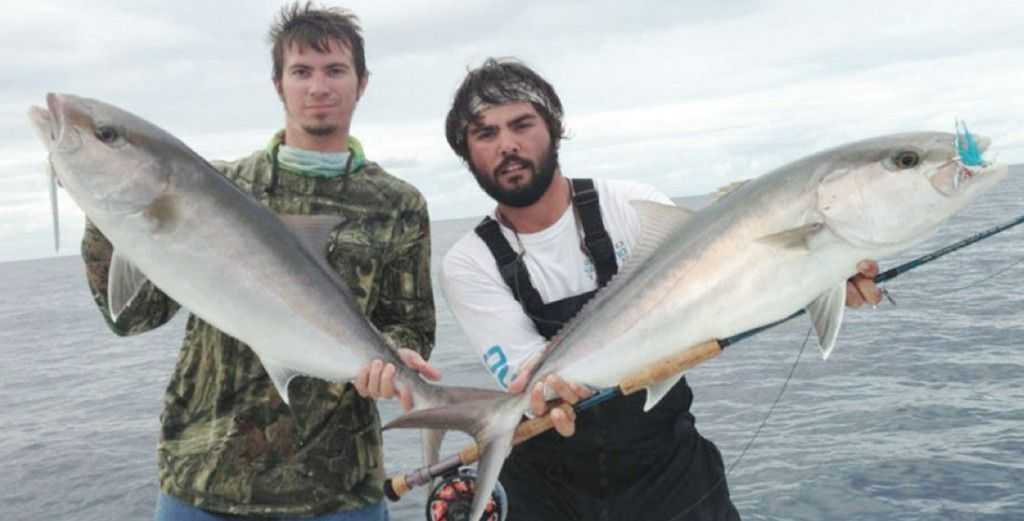By Capt. Colt Harrison:
It happens every year. The tarpon are the first to go. The mullet gang up then disperse. Shortly afterward, the menhaden balls off the beach vanish, and sharks become a rarity. The bull redfish bite stays strong through November, but when water temps dive into the fifties, they too head for warmer climes. By the time Christmas rolls around, our small-boat, big-game fishery is dead in the water. For my roommates and me, winter is a season to sit on the couch, drool over tower boats on the internet, and plan strategy for next year’s cobia and tarpon seasons. Sure, the inshore bite is good, but days off are too valuable to be spent in pursuit of small fish. Our 12 weights and heavy spinning rods sit on racks in the corner, pouting and collecting dust; and when we can’t stand to look at them any longer, we load them up and head towards the ledge. We run about 30 miles out to 90 feet; and when we arrive, we’re always met with happy gangs of the easiest fish to fool in the sea, the lowly but burly amberjack.
When we’re targeting more glamorous nearshore species, we curse AJ’s and their time-wasting battles, but when it’s cold and we need some lovin’, we’re happy to yank on some string-stretching reef donkeys. A quick look at any nearshore or offshore fishing chart will show you wrecks and patches of live bottom; almost all of them will hold AJ’s. We use our electronics to mark fish or just throw massive hook-less poppers to bring schools to the surface. If you entice on jack, you’ll usually entice a whole drove. Sometimes schools of jacks will follow plugs all the way back to the boat and park under your hull, just waiting for anything to fall in the water. When they’re around, lure or fly choice is not critical; just use something that looks like a baitfish and move it at warp speed. Frozen chum, or live if you can catch it, will help keep them around. Other days, when the fish are shy about coming to the surface, knife jigs, swimbaits and sinking fly lines with streamers are the ticket. Even when the fish won’t come too close to the surface, if you hook one deep, others will usually follow a hooked buddy to the surface, a big help when fly hookups are hard to come by. A winter’s day full of amberjackin’ will leave you sore in the back and feeling like it is summertime again!
Two critical things to take into consideration when you’re heading offshore in a smaller boat are the weather and safety gear. Although we’ve been called reckless for doing it, and rightfully so, we take my roommate Capt. Brandon Long’s 21-foot, single engine Tidewater bay boat out to 90 feet. We usually only do so in the wintertime, when squalls are fewer and further between, and only on days when the wind is below 5 mph all day long. We also, without exception, carry an EPIRB with us, not to mention a VHF radio. In the event of engine failure, we can call for help on the VHF; and if, God forbid, the boat goes down, we’ve got the necessary flotation devices to keep us on the surface till the EPIRB brings help. When you don’t have the means to travel south to warmer waters, amberjackin’ will help keep those winter blues at bay, at least until the springtime!
If you’d like to experience some amberjackin’ for yourself, call Capt. Colt Harrison at (864) 380-0490 or Capt. Brandon Long at (843) 754-0086.

